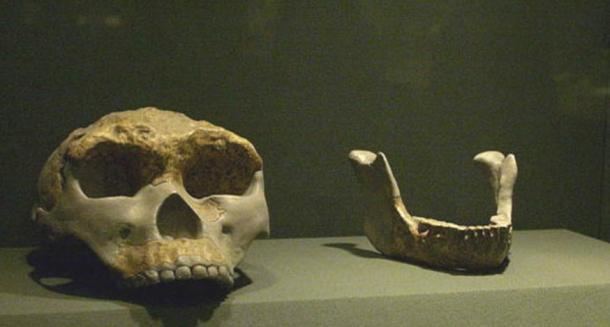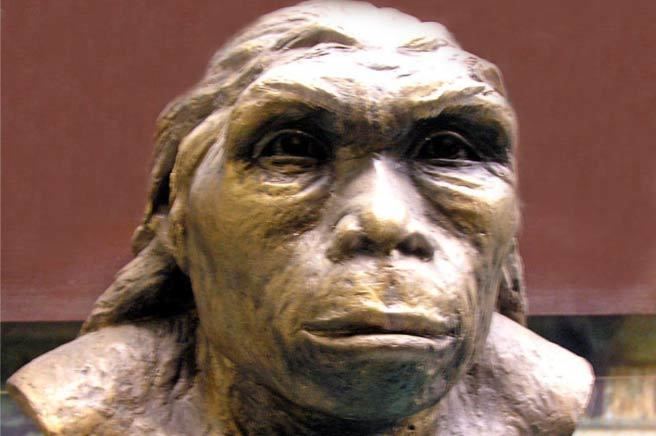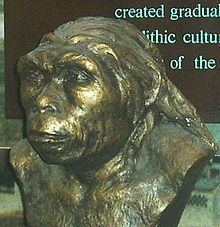Rank Subspecies | Phylum Chordata Genus Homo Higher classification Upright man | |
 | ||
Similar Yuanmou Man, Upright man, Australopithecine, Humans, Homo cepranensis | ||
Lantian Man (simplified Chinese: 蓝田人; traditional Chinese: 藍田人; pinyin: Lántián rén), formerly Sinanthropus lantianensis (currently Homo erectus lantianensis) is a subspecies of Homo erectus. Its discovery in 1963 was first described by J. K. Woo the following year.
Contents

Remnants of Lantian Man were found in Lantian County, in China's Shaanxi province, approximately 50 km southeast of Xi'an. Shortly after the discovery of the mandible (jaw bone) of the first Lantian Man at Chenjiawo (陈家窝), also in Lantian, a cranium (skull) with nasal bones, right maxilla, and three teeth of another specimen of Lantian Man were found at Gongwangling (公王岭), another site in Lantian.
The cranial capacity is estimated to be 780 cubic centimetres (48 cu in), somewhat similar to that of its contemporary, Java Man.
Scientists classify Lantian Man as a subspecies of Homo erectus. The fossils are displayed at the Shaanxi History Museum, Xi'an.
In the same strata as and close to the Lantian Man fossils, animal fossils and stone artifacts were found, such as treated pebbles and flakes. The presence of these stone artifacts and as well as ashes suggests that Lantian Man used tools and could control fire.

Dating

The Lantian fossils are two females who lived about 530,000 to 1 million years ago, the second being older by about 400,000 years. Gongwangling Man represents the oldest fossil of an erect human ever found in northern Asia.
A re-dating of the site occurred as research published in 2014. The new analysis has determined that the strata containing the cranium from Gongwangling dates to approximately 1.63 million years ago rather than the previously recorded 1.15 million years ago estimate. This new confirmed date makes the cranium the second oldest site outside of Africa, Dmanisi, Georgia being the oldest.
Lantian Man is likely older than Peking Man, but slightly younger than Yuanmou Man.
Tool Complex
Until the 1980s it had been commonly accepted that comparisons between European and Asian Paleolithic cultures were not possible. The common thinking was that there was too great a difference between their tool technologies. In the 1940s a researcher, H.L. Movius, proposed that the Paleolithic West was made up of "hand axe cultures", while the East had "chopper-chopping tool cultures". Numerous research into technological traditions followed the model proposed by Movius in support of the East/West technology divide.
Twenty-six lithic artifacts were uncovered in the same loess sedimentary deposit as the cranium from the Gongwangling site in Lantian County, China. The artifacts consisted of cores, flakes, choppers, hand-axes, spheroids, and scrapers. Lab analysis suggested that the "early hominins chose quartzite, quartz, greywacke and igneous rock pebbles/cobbles on the riverbank for stone knapping, whereas the fine sandstone, siliceous limestone and chert were used only occasionally." Studying the assemblage from Gongwangling along with a series of other sites in the Lantian region leads researchers to believe that the tools utilized by the hominids are more similar to the Acheulean tools utilized in the West than previously thought. This means that the tool technology is not different, and still consists of more large hand tools e.g. hand-axes than previous researchers thought and represents a continuum of technology from the West rather than two separately occurring technologies.
